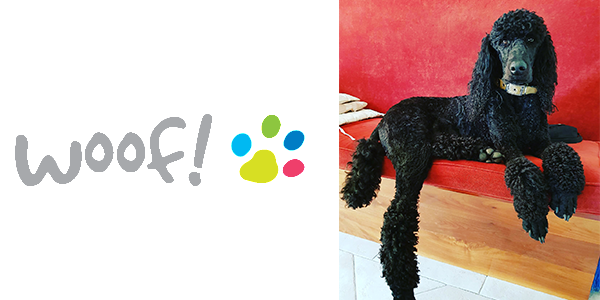In today’s interconnected world, time management is no longer about the individual, it’s about the collaborative collective.
With COVID-19 fast tracking a digitised remote working environment, we may never return to how work used to be. The notion of the daily commute, or a day spent whipping around the city for meetings, all seems foreign now. What have we lost through this new remote environment? What have we gained? And how can we best leverage this new world to maximise efficiencies?
While the joys of working from home has created time to indulge new passions, some unhealthy habits have also been created. A colleague recently bemoaned how they ever so gradually descended into the habit of booking and accepting back-to-back meetings because there was no need to move from a desk. This had created a work environment that failed to lend itself to freethought and restricted the amount of independent work that could be done. Others have lamented the absence of watercooler chats, in which unexpected inspiration can strike, or the luxury of head clearing travel time between meetings.
The idea of returning to the office brings a sense of opportunity, as we consider how best to merge new ways of working with old and these considerations are best made with a collaborative, rather than personal lens.
A recent article in The New Yorker, “The Rise and Fall of Getting Things Done; How personal productivity transformed work—and failed to” provided insight into the dangers of descent into the personal productivity rabbit-hole. The article began by describing the personal productivity craze of the early noughties driven by Merlin Mann, a US Web designer, who helmed a highly popular blog on all things personally productive: ‘47 Folders’. Mann built a list-making efficiency system designed to tackle the frantic and improvisational mode of working that the advent of emails facilitated.
After an initial frenzy of popularity, Mann became openly disillusioned and bewildered by the increasing complexity of his strategies. By 2011, he felt that his attempts at honing personal productivity were becoming a complexifying act in itself : “On more than a few days, I wondered what, precisely, I was trying to accomplish,” he wrote.
He subsequently penned a reflective piece expressing his disenchantment and has not posted again.
Mann had become undone by the sheer weight of information coming his way, particularly in the form of email. Back in the noughties, email was king, but times are changing. If we could go back in time we would say to Mann, “Hang in there, buddy. Email is just the battle, not the war. The real issue is reducing emails, not just managing them. Modern technologies will evolve that will take the tyranny out of the email trail.” And those technologies are now with us today.
Mann was naturally approaching email, time management and productivity from a personal point of view. What if we tackled these challenges collaboratively?
Last week, enterprise service management company TOPdesk hosted an online seminar containing some valuable lessons by a panel of IT support managers from leading Australian corporate and educational organisations.
One leading telecoms provider approached email reduction by taking the office to Microsoft Teams – using social media-type posting to reduce the email trail. It makes sense. This has been one of Yammer’s core value propositions since its inception. It was a goal that proved highly popular and one that most employees could buy into. But to make it work, teams must agree and collaborate. If someone isn’t adopting as fast as others, they must be helped. Embracing new methods of communication is the responsibility of the “Borg” oh I meant collective.
A second lesson concerns the right to recommend change. A new IT manager at a university was distracted by the time-consuming and inefficient processes of old. Why did it take so long to get a new laptop when Officeworks or Amazon could provide it in a few hours? But in the detached, remote working environment necessitated by COVID-19, where face-to-face meetings had not happened, it was felt that there was a need to develop closer relationships before suggesting changes. A return to the office may then provoke an environment that lends itself more easily to innovation.
The third and final change concerned learning and abiding by new etiquettes. One manager said that in the winter period when lockdown restrictions had loosened, they went back into the office with colleagues for a brainstorming session that proved valuable and rewarding. Once Victoria returned to lockdown, hybrid meetings emerged, with some people together and others on Teams. The dynamic was not as constructive. Meetings were resolved to be either remote or physical to maximise collaboration.
So, as we optimistically anticipate a post-COVID-19 world, think not what you can do personally to improve your productivity, think about how you can collaborate better to create a more rewarding work environment for you and your teammates both at home and in the office.

A helping paw

Summer is stretching out in front of us, and the feeling of rebirth that it brings feel stronger this year. Free from isolation, we dogs are relishing the freedom of unlimited walks, and access to dog beaches outside of a 5k radius.
But take a look at the handsome poodle who writes these words – and take note of his big black woolen coat. While this serves as a reminder that I am a fashionable pooch, it should also serve as a warning. Dogs aren’t quite as well-equipped to tackle the sweltering summer as our human friends. Indeed, while people produce that strange, tasty body liquid you call sweat, all us dogs can do to cool down is sit in the shade and pant.
So before taking your Bernese Mountain Dog for a mid-arvo jog, consider these tips:
- Prioritise dusk and dawn walks to limit exposure to the sun when it’s at its most intense
- Always ensure your dog has plenty of access to water. As much as I try, these damn paws can’t get a hold of the tap. If it’s particularly hot, throw a few ice cubes in!
- Finally, aside from those writing closing thoughts for weekly EDM newsletters, dogs can find it hard to communicate. So be wary of signs of heat distress. Heavy panting, salivating and changes in gum colour may suggest heat exhaustion.
With all that in mind, let’s embrace this beautiful season!
Contact us to refine your business’s productivity standards



